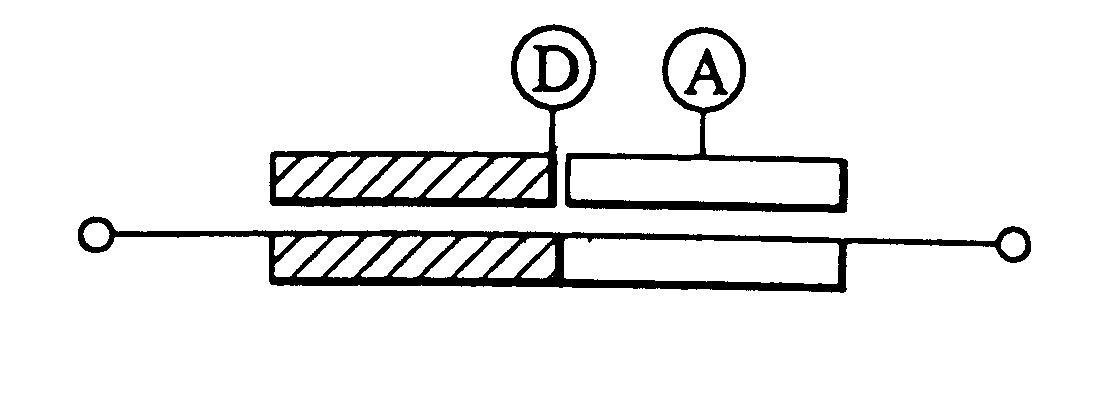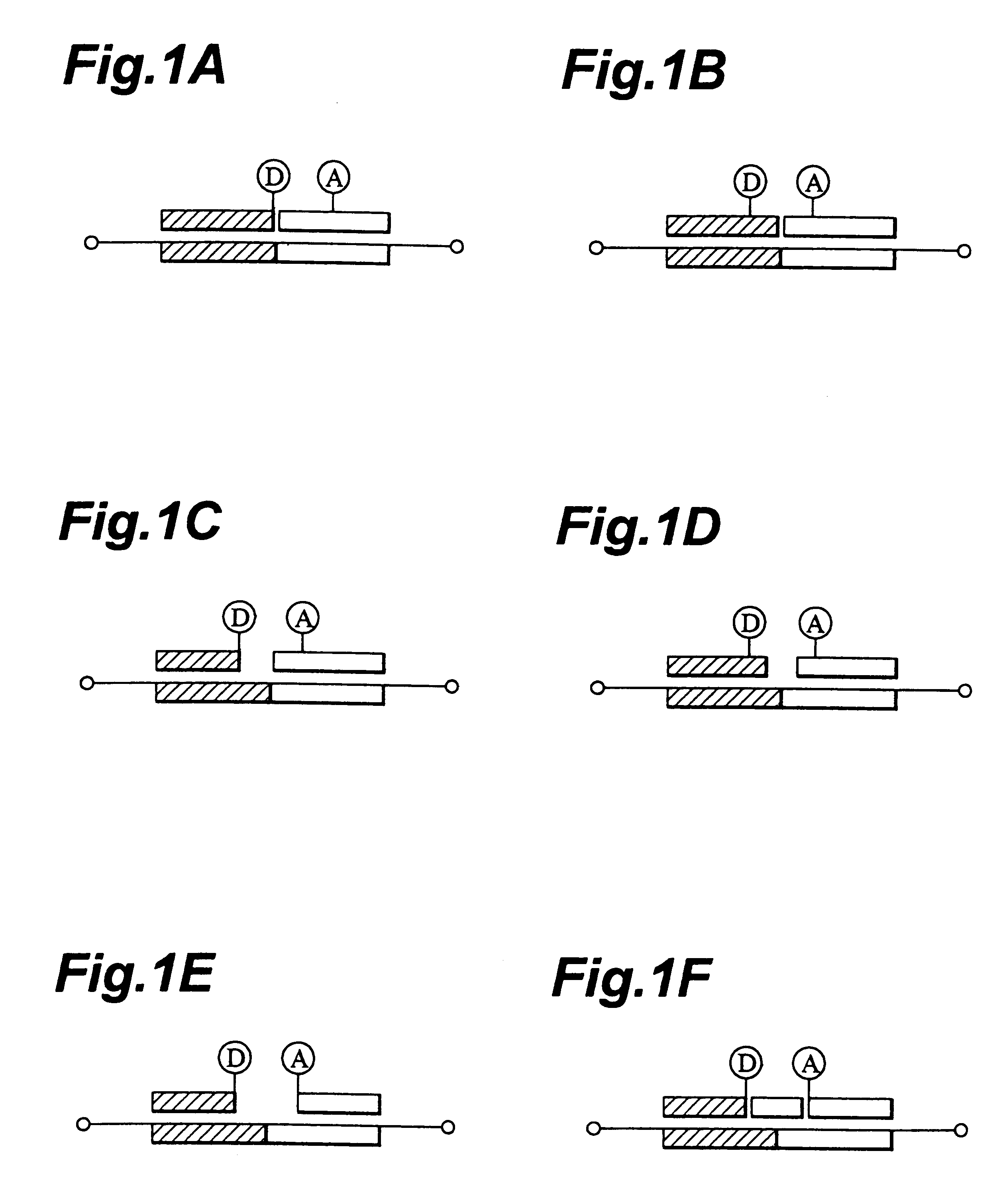Probes and methods for polynucleotide detection
a detection probe and polynucleotide technology, applied in the field of fluorescent labeled detection probes, can solve the problems of not being able to lower the concentration of detection probes in samples below certain levels, and being difficult to use the above-described method for detecting a target nucleic acid based on changes in the fluorescence spectrum, etc., to achieve the effect of reducing energy transfer efficiency and easy detection
- Summary
- Abstract
- Description
- Claims
- Application Information
AI Technical Summary
Benefits of technology
Problems solved by technology
Method used
Image
Examples
Embodiment Construction
1. Detection Probes
A variety of oligo-DNAs labeled with various fluorescent dyes were synthesized and these hybridized to DNAs that serve as specimens to be tested. After separating and purifying the resulting hybrids, their fluorescence spectra and fluorescence decay curves were measured.
(1) Synthesis of the Probes
Oligo-DNAs having base sequences as described below were synthesized with a DNA / RNA synthesizer (Perkin Elmer Model 394 or Perspective Model 18909) according to the .beta.-cyanoethylamidite method.
In the above-mentioned probes N1-N7, "X" denotes a Uni-Link AminoModifier (Clonetech Laboratories Inc., Code No. CL5190-1).
In the above-mentioned probes N8-N10, "X" denotes a Uni-Link AminoModifier.
In the above-mentioned probe N11, "X" denotes 6-(trifluoroacetylamino)hexyl-(2-cyanoethyl)-(N, N-diisopropyl)-phosphoroamidite (TFAc hexanolamine linker, Perkin Elmer Japan Co. Ltd., Cat No. 400808).
In the above-mentioned probes N12-N17, "X" denotes a TFAchexanolamine linker.
The respe...
PUM
| Property | Measurement | Unit |
|---|---|---|
| Fraction | aaaaa | aaaaa |
| Fraction | aaaaa | aaaaa |
| Fraction | aaaaa | aaaaa |
Abstract
Description
Claims
Application Information
 Login to View More
Login to View More - R&D
- Intellectual Property
- Life Sciences
- Materials
- Tech Scout
- Unparalleled Data Quality
- Higher Quality Content
- 60% Fewer Hallucinations
Browse by: Latest US Patents, China's latest patents, Technical Efficacy Thesaurus, Application Domain, Technology Topic, Popular Technical Reports.
© 2025 PatSnap. All rights reserved.Legal|Privacy policy|Modern Slavery Act Transparency Statement|Sitemap|About US| Contact US: help@patsnap.com



